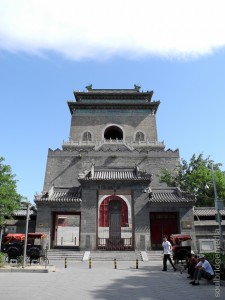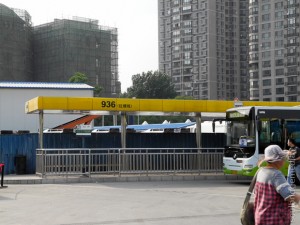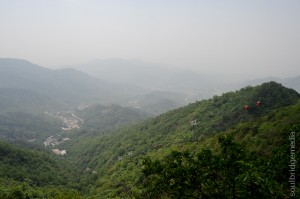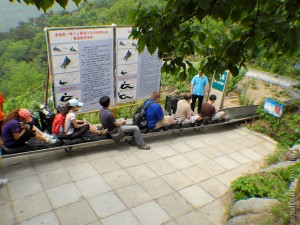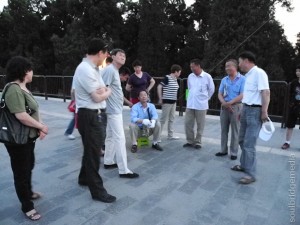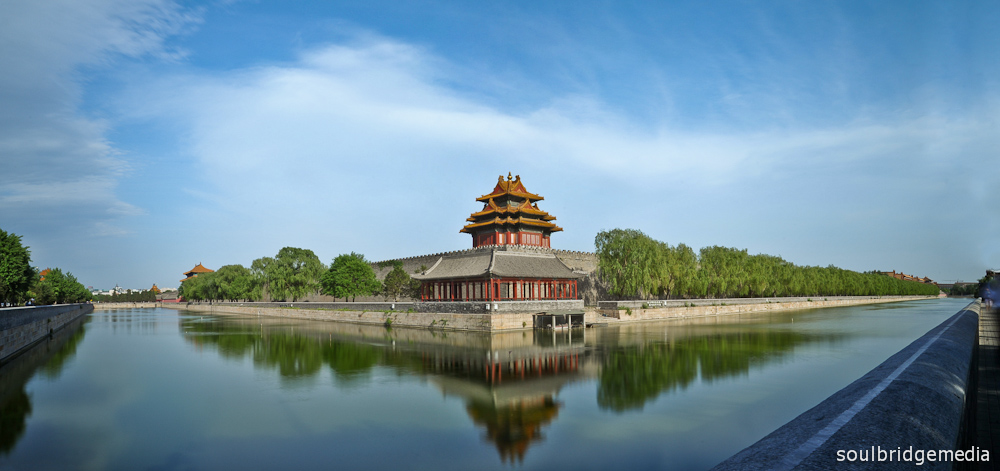Beijing 2011 part #4 – Shopping
Shopping in Beijing… where to start? No, seriously, where do you start?? There are scores of huge multi-level shopping centres which pretty much fall into two categories, high end dedicated brand name stores and haggle city, home of knock offs, repetition and de ja vue. Having shopped till we almost dropped (well at least to the point where we were shipping box loads of stuff home from San Fran and London), our enthusiasm to battle the crowds was waning but we still managed a few stops and a couple last minute items to toy with out luggage limit.
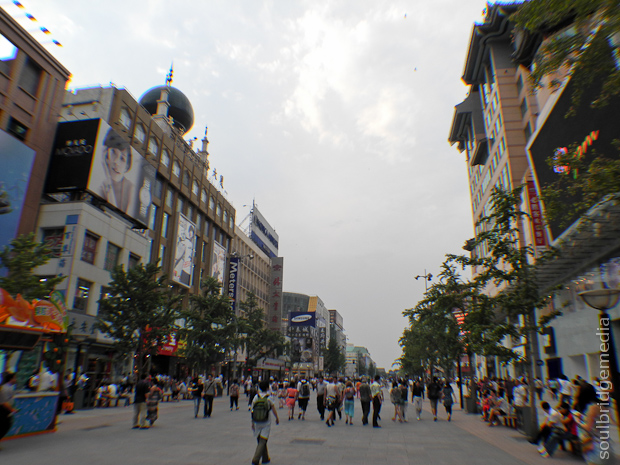
Wang Fu Jing Da Jie
Downtown
A good place to start is downtown Beijing (Dongcheng), an open air, sealed off road style shopping/business center on Wang Fu Jing Da Jie (crossroad : Jinyu Hutong). Nearest metro is Dengshikou, under 1km away or a similar distance from the Forbidden City (depending on which exit you take). Hesitant or cultural shocked shoppers will find this a nice way to ease into it, nothing like the Golden Arches or the Colonel to set your mind at ease no matter where you are in the world 😉 The northern end houses a fair selection of branded watch stores included Omega, Tagheuer , Rolex, our G Shock friends and plenty of glasses/optometrist stores. Nike Beijing is also there, mostly along the athletic side of things with only the latest stock so you wont find any rare releases or streetwear related items but there is a Nike iD upstairs. The store sits in a multi level mall with a run of the usual random clothing and electronics stores, there are however some notable boutique stores sporting some designer Kidrobot, anime, kawaii style gear, like Devil Nut, unfortunately they had the prices to match. There’s also a smallish Adidas store, good for a couple regional tees.
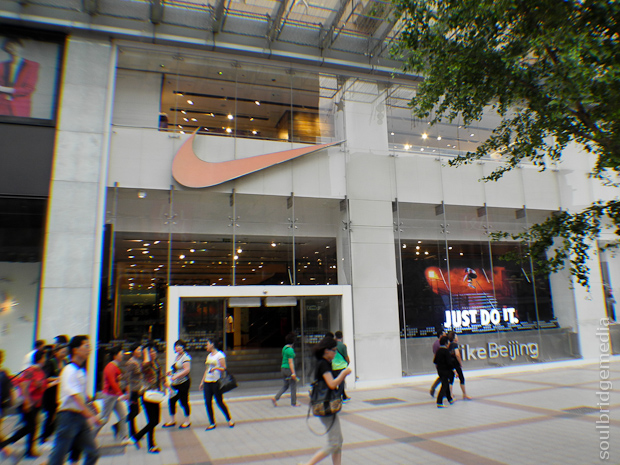
Nike Beijing
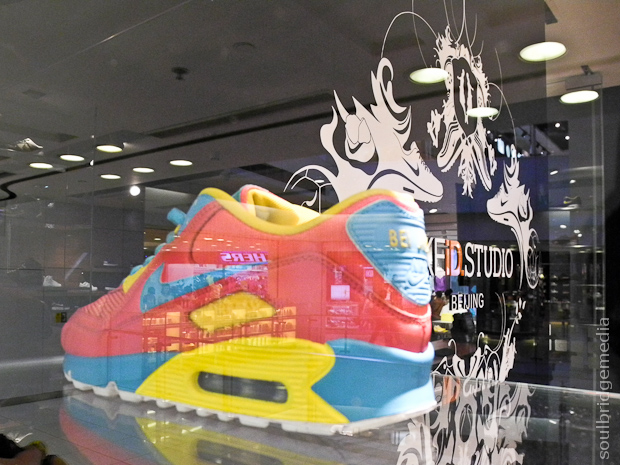
Nike iD
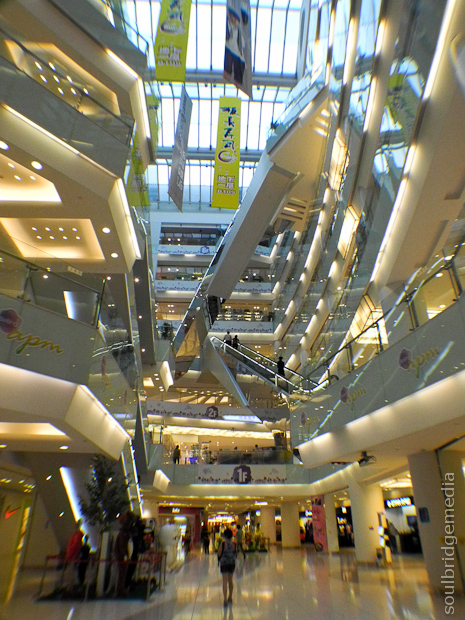
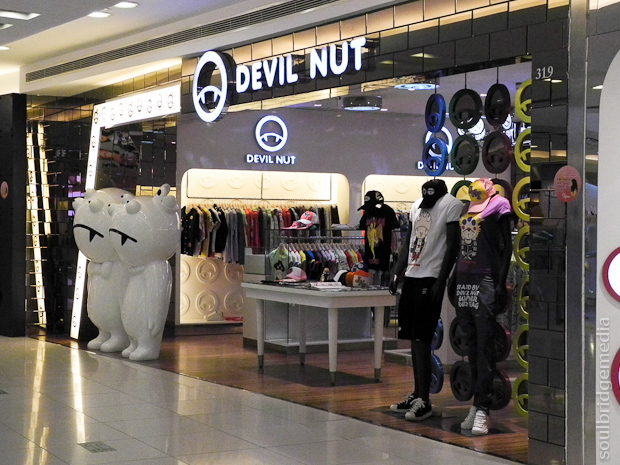
Devil Nut
On the southern end of Wang Fu Jing you’ll find another shopping mall – Haoyou World and a bunch of eating places, most notably the famous Wang Fu Jing snack street, great for a plethora of variety but you will have to haggle for your dinner if you want it at a reasonable price or you could take the easy route and go with Yoshinoya.
There are also a small scattering of boutique street wear stores in the surrounding blocks like this Eternal store stocking Nike SB and other skate related brands and products but as with many of these shops, they come and go so be sure to do your research before hand and potentially save yourself a hike.
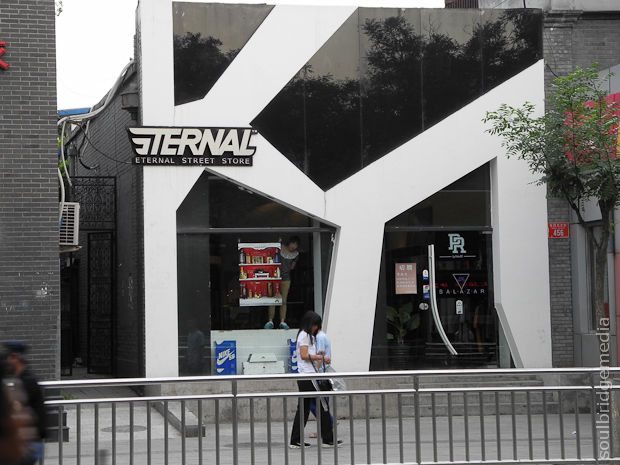
Eternal
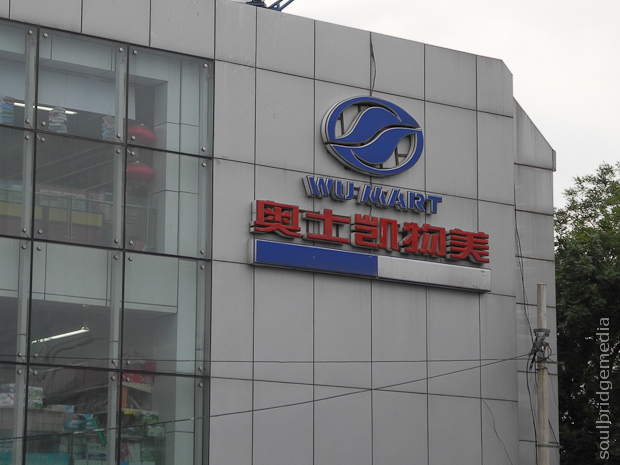
…where you can buy members of the Wu-Tang clan…
Hongqiao Market (Pearl Market)
If you’re out visiting the Temple of Heaven then this “market” is only a couple hundred meters north of the East Gate exit (just up from Tiantandongmen metro stop). The Pearl Market used to be THE place for knock off goods but after getting hammered by the license holders and having building management crack down… its still pretty much the place for knock off goods!
Even though the name suggests its only pearls and jewellery, these are mostly secluded to the top 2 floors, but a bargain (on the real deal) can still be had if you know what you’re looking at/for.
The lower three floors are made up of side by side market stall set up. Most with glass display counters so its more like a department store than a flea market.
Level 1 – Mostly electronics – cameras, mp3 players, storage media, watches, audio/visual. Beats Audio headphones for $40AU? No thanks, even with the pleas from the sales person as “real deal, good buy”. While there were quite a few stores selling DSLR equipment I was still skeptical to the quality as there was just no way of telling if they were warranty repairs or QC failed grade. There were also some silk items and underwear stores mixed randomly between the other stores.
Level 2 – Clothing, shoes, handbags, travel goods – this is where things get tough. Once upon a time I think alot of broke kids much like myself would’ve just been happy to have the brand logo, if it had the same cut/style/distinct features that was a bonus, but I guess as you get older (and have more disposable income) you get choosier and you also buy products for their technology/features/build quality. So the dilemma quickly becomes apparent, that North Face jacket says it has Goretex, looks and feels like it, even has the tags but do I really want to find out in the middle of a downpour far from cover that it isnt waterproof? The sneakers however were a lot easier thanks to my trained eye and a bit of common sense. Jordan 1’s in unreleased colourways or limited edition from 5 years prior just sitting on a shelf at a market? You’re definitely right to be skeptical. Where things get difficult is with current run of the mill models. Being in the country that makes the genuine article means there are plenty of variants, which can even be authentic stock that followed a factory worker home or the more common “fell off the back of the truck” items. Where the seams start to come apart (pun!) are those that have the same equipment but cut corners with materials and quality control. So keep your wits about you, if its too good to be true then it usually is.
Level 3 – Traditional Chinese art, ornaments, vases etc. – Worthy stop for some souvenirs, just remember two things – 1. take note of the materials used in the items, remember AU customs isn’t going to look too kindly on that living bonsai pondscape complete with exotic goldfish (and if you do find something you think will be passable eg. Wooden vase, save yourself embarrassment and a possible fine, declare it) and 2. haggle haggle haggle.
Finally outside there’s good ol’ reliable Yoshinoya and to the right and behind is the Hong Qiao toy market, which I only found out about recently, how I missed this in my research I have no idea! Can someone go check it out or those that have been, tell me its crap so I don’t feel so bad? 😉
Photo tip – like alot of places that sell “unofficial” (re: fake) goods, the shop owners can be rather “private” (re: paranoid that you’re collecting evidence). I managed to get a short video (on a point n shoot) walking down one of the aisles before I was repeatedly beaten… with a rolled up brouchure. Admittedly moo-ing like a cow then asking about “copy watch” didn’t help my case so it’s best to keep photos to a minimum or feel the same wrath.
Hutongs
One of the other bonuses of staying at the Courtyard 7 was being pretty much in the middle of a lane of boutique stores and restaurants on S Luogu Alley, which you could easily liken to places like Bulimba or West End in Brisbane. Many stores stocked a random assortment of quality knick knacks, unusual souvenirs and designer kitch, a far cry from the generic over rehashing of comparative market stalls.
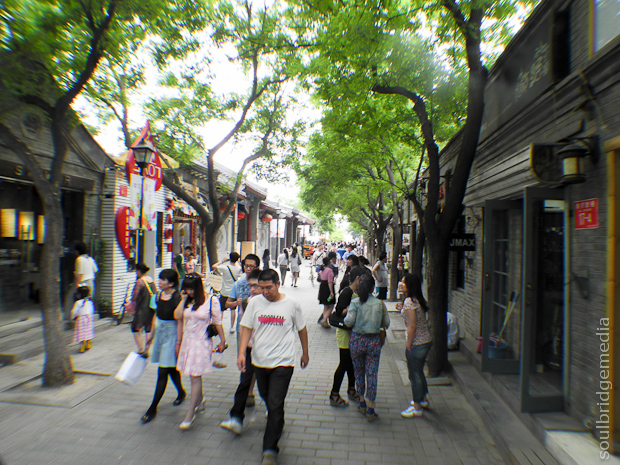
S Luogu Alley
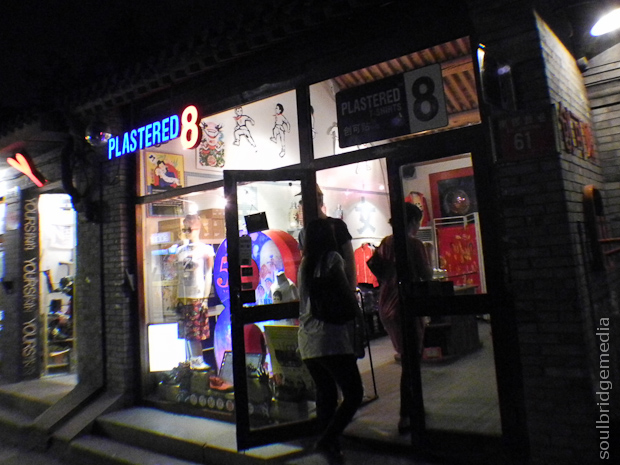
Plastered 8
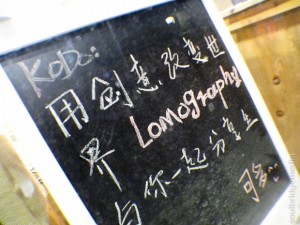
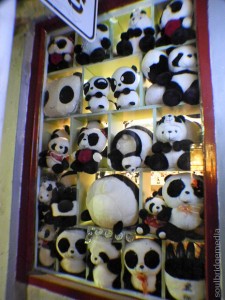
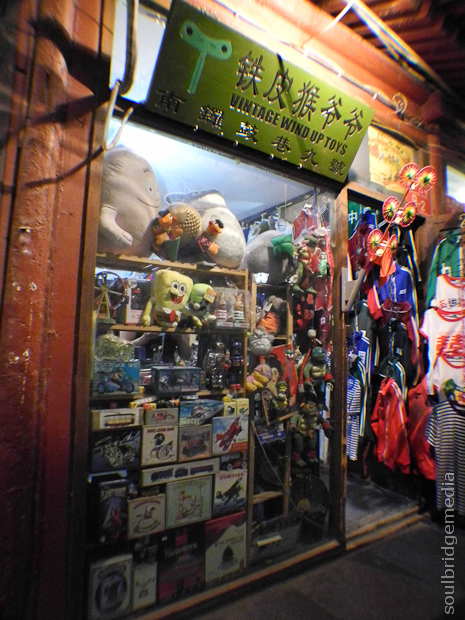
Vintage wind up toys
Places like Plastered 8 stocked designer tee’s, most with an Asian theme while “Vintage wind up toys” was exactly that, old metal wind up toys. Most were replicas but there were also some older antique items amongst general toys and oddball items. Hipsters will go nuts with Lomo camera gear offerings and of course you can’t leave China without some kind of panda paraphernalia.
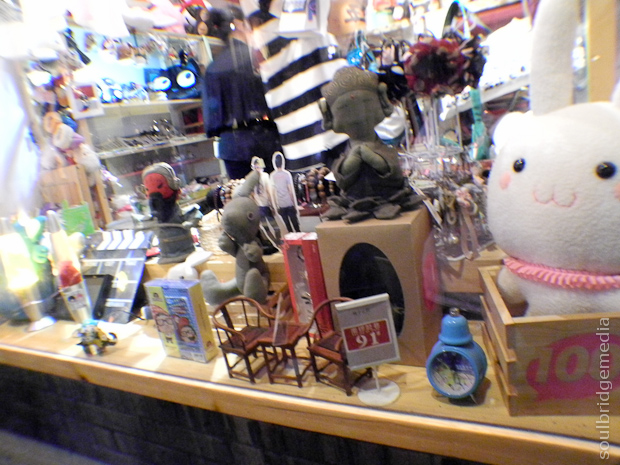
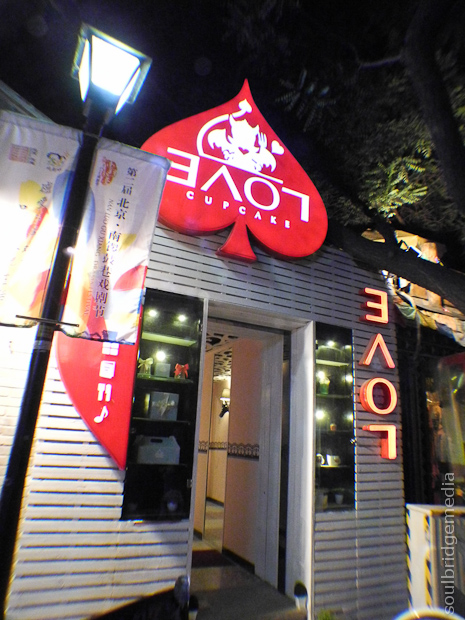
Love Cupcakes
Tea houses, small bars and even gourmet cupcake stores follow the lane up to Gulou E St which becomes Jiaodaokou E St. (a major arterial road which leads to the nearest metro stop, Beixinqiao). Along here you’ll find the regular western fast food places with a few clothing and toy boutique stores, many with no names like this toy store, which was packed to the ceiling with figures and model kits while another sold giant plush poos. Good luck or not one managed to follow us home 😉 and with that, comes the conclusion of our 2011 round the world stint. A little slow in the recap but we got there in the end!
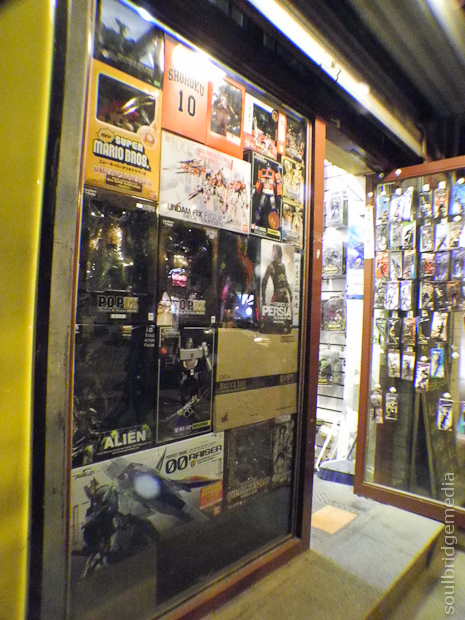
Coming soon, we’ll be reliving this year’s getaway from the land of Jurassic Park, 50 First Dates, pineapples, coconuts and shave ice (no “d” 😉 )… HAWAII!
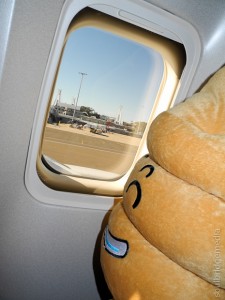
Beijing 2011 part #1 – Arrival + Temple of Heaven, Forbidden City
Beijing 2011 part #2 – The Great Wall – Mutianyu
Beijing 2011 part #3 – Beijing Zoo
Beijing photo gallery here
Beijing Zoo photo gallery here
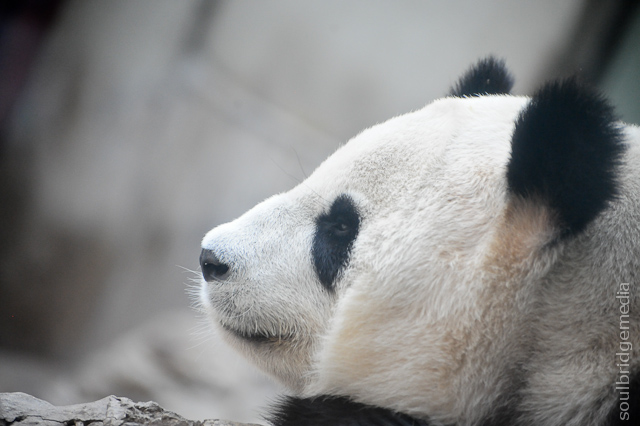
Getting There
The closest train station was over a kilometre away but we decided to walk from our hotel to take in some of the residential sites as well as making a short detour pass the Drum Tower, however after that there wasn’t much to see. Catching the train was a breeze – get on at Gulou Dajie, change at Xizhimen and get off at Beijing Zoo. A taxi would have been more convenient but judging from some of the traffic we saw along the way, I dare say the train would be quicker (depending on where you’re coming from of course).
Once there you’ll have to purchase your tickets, don’t go into the courtyard and expect to get tickets at the gate, look for a line of ticket windows with a mass of people looking like a cross between the stock market and the lines at a music festival. This isn’t London, no
one knows what queuing is, throw in wandering tour groups and masses of school excursioning kids and you’ll understand why I recommend
pre-purchasing your tickets if you can. Like most major attractions there’s rarely a quiet time but a week day visit may see a few less locals.
When inside there’s three areas roughly divided into amphibians, reptiles and birds; big animals and aquarium; and lions, tigers and bears (oh my!). Of course the star attractions are the pandas and the area, especially at the start of the day, was packed so we decided to head away from the crowds.

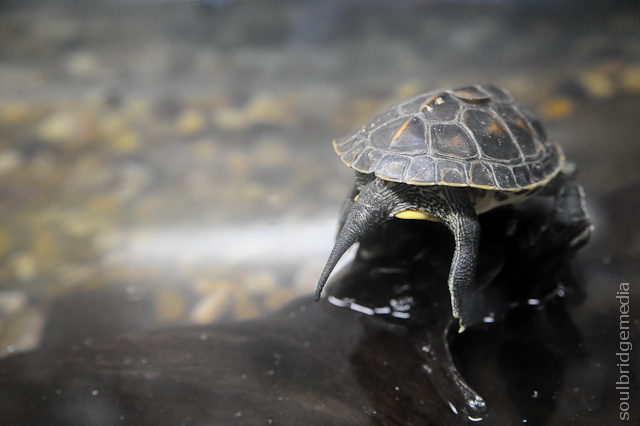
Things kicked off with the reptile enclosures but the first flag appeared when we saw a group of locals coaxing otters by feeding
them sausages and other snacks while staff stood by unconcerned. I don’t know about you but I have no idea what otters eat let alone what could potentially kill them! I for one definitely wouldn’t want no otter homicide on my hands.
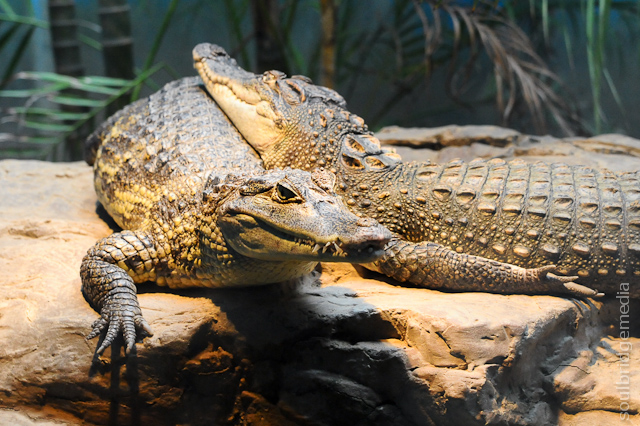
Normally we love zoos especially the big ones where the animals have plenty of space to roam but as we continued it became more and more obvious and rather disheartening to see a lot of the enclosures in varying states of disrepair not helped by the original poor attempts at “authenticity” re: jungle mural painted brick wall.
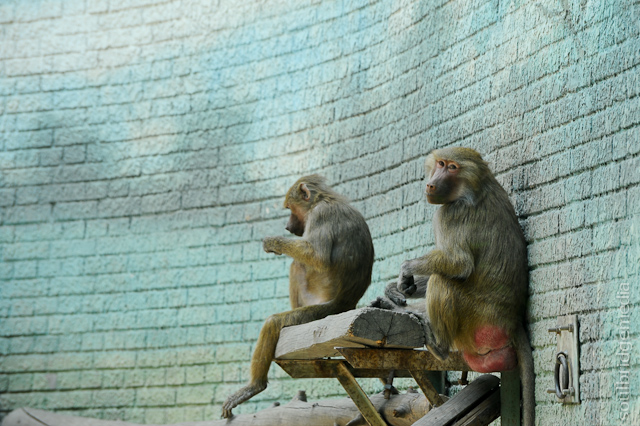
Sporting a similar poorly simulated scenery was the penguin enclosure, which like several displays wasn’t included in the ticket price. A separate ticket had to be purchased for this enclosure and quite frankly it wasn’t worth it, even with our overwhelming love for the little tuxedo wearers.
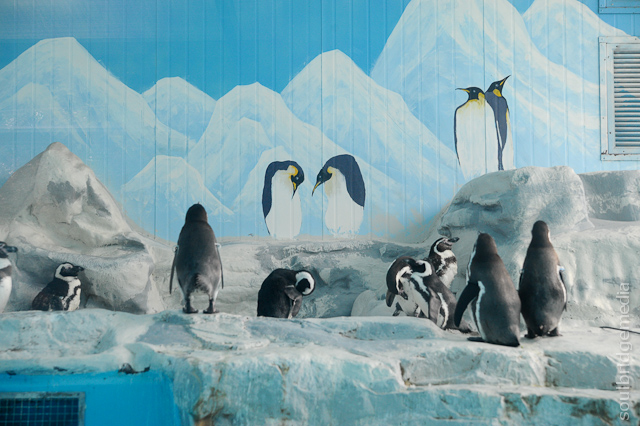
Like the penguins, it was an extra fee to get up close to the giraffes but this time you could actually feed them by hand (leaves and other greenery, not the stuff from your bag).
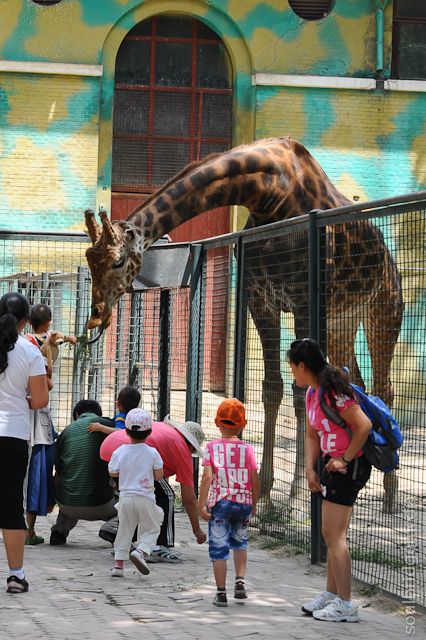
The hippo, rhino, elephants, lions and tigers were all either off in the distance or not visible at all so it was a quick breeze through those sections. Back to the pandas, the crowd had waned a little but it was still at least 3-4 people deep in parts and quite a battle to get close to the viewing glass to snap a photo, but well worth it when you do.
Photo tip: battling the crowd is the easy part, getting your camera close enough to no get any reflection from the glass or 10 camera phones in your shot while dodging some parent holding their terrified scream protesting kid in between the rail and the glass is the real challenge. Just like waiting at a bar to be next in line for drinks you need to choose your moment and make a quick move to any opening spots. Keeping an eye on the movement of other background animals could help you lock in a good shot as well. Wide to mid range zoom with macro ability will be the best lens choice for the whole day, I found a long telephotos lens wasn’t necessary.
With that bit of disappointment done and the rest of the Beijing sights seen, there was only one thing left to do… SHOP!
More Beijing Zoo photos here.
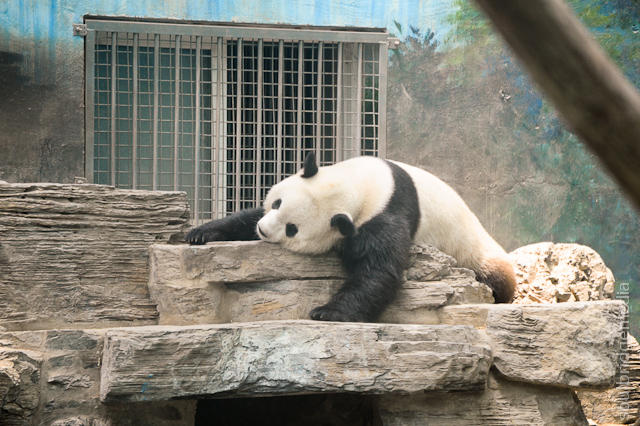
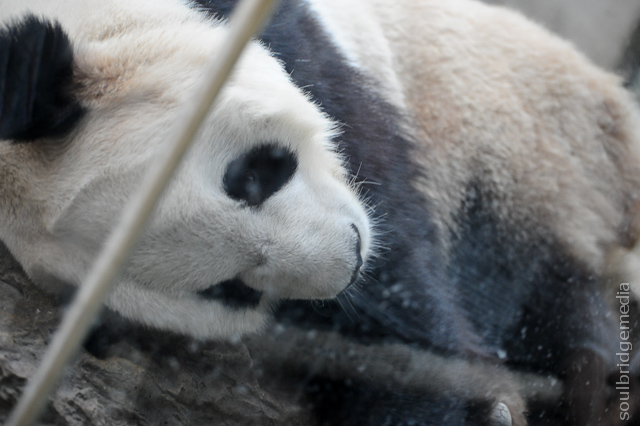
Beijing 2011 part #1 – Arrival + Temple of Heaven, Forbidden City
Beijing 2011 part #2 – The Great Wall – Mutianyu
Beijing 2011 part #4 – Shopping
Beijing photo gallery here
Beijing Zoo photo gallery here
We’re not talking about the el cheapo 4WD and utes but the real mccoy, the one you can see from space! Its as vast as there are sections of it to see and options on how to get there.
Getting There
The first and quite common option is to arrange a tour. Like any tour, it’s a matter of fronting up the cash then waiting for your transport and instructions, easy enough. However the problem with this is a lot of the tour companies/bus operators/tour guides are in cahoots with local factories/markets so they make a few stops along the way so you spend money there as well. This might sound like a good idea but pick the wrong one and you’ll spend hours at a stop with nothing to do but get hassled by hawkers. Also not very good if you have a schedule to keep. There are of course legit operators and “private” guides that will take you directly to the wall, so do your research first!
Second option is to charter a taxi for the day, ie. You pay them to drive you there, wait and then drive you home. This option, while a bit expensive, would work well for a direct and quicker (no stops) travel but can be cheaper if you have a few people together to split the fare, the trade off however is trying to get a guarantee that the driver will hang around and wait for you and not run off as soon as some one else waves cash at them. On the plus side, there are plenty of drivers at the wall willing to take you back to the city so you wont be stranded.
Third, if you like living on the edge, is to hire a car. Cost is similar to most countries of $50-100AU a day for an “economy” size from a reputable dealer, however, assuming you have been in town for more than a minute and have witnessed the chaotic homicidal (or should that be suicidal??) drivers, this would be a last resort for most.
The final option and by far the cheapest, is to take public transport. I’m not sure about other sections of the wall but Mutianyu had only 2 bus services, slow and not as slow. Both will get you there eventually but one will make a lot more stops and a slight detour. The bus you’re after is the 936. To find this bus station, head east along the main road from Dongzhimen station for a few hundred meters. You’ll see the buildings die off, construction sites appear and it looks like you’ve gone too far (though, in the time since we travelled here its best to assume that there’s a new shopping mall/skyscraper there!), you’ll come across an open air bus terminal (see image). There’s a small ticket office (re: demountable building) but tickets are purchased on the actual bus. The journey is over 2 hours and there is a strong chance you may not get a seat and will have to sit on the floor. Also note, some seats have a different coloured headrest, after a lot of dirty looks and what we originally thought were comments about foreigners from elderly people we worked out that the seats were reserved for them. Strange since they were in the middle of the bus and not at the front, didn’t help that these weren’t signed/labelled!
Remember these are the options I looked at for the Mutianyu site, other sections like the popular and closer Badaling section will vary.
UPDATE: It seems they may have ditched the “express” 936 service and replaced it with the 867, however the stop seems to be the same. There is also mention of a 916, see Lonely Planet for more details.
Up the wall
Once at the wall, there are a bunch of different options to choose from depending on your available time, patience and stamina. The bus stop (cabs and carparks) are at the bottom of the mountain away from the wall. The ticket office and entry in itself is a bit of a steep walk to get to, made no easier with having to run the gauntlet of hecklers selling just about anything with the obligatory Wall reference.
Travel tip: Remember to bargain hard and never feel like you’re low balling them. Supply always far outweighs the demand.
From the entrance you have a choice of a hike up the mountain to the wall or a cable car. We figured since we were already going to be doing a bunch of walking we’d choose the relaxing trip on the cable car. If you are trekking to the untouched re: “wild” sections of this wall section then this is the way to go, it drops you at tower 14 and with 34 towers for this section itll save you some energy as well! We chose to head in the other direction back to tower 5.
The wall was constructed purely as a strategic military point of defence and offence (remnants of cannons still remain) and it becomes very clear once you’re on it how difficult it would be for any invading army to even begin to think of how to get across the mountains and foothills let alone the wall as well. So with that in mind, there’s no “easy parts”, its constantly up and down with uneven paving and stairs. This is where good quality hiking shoes are a must. Thongs (flip flops), sandals, “girlie” shoes or cheap/poor support/cushioning sneakers will leave you with more than just blisters or a rolled ankle before you pass your first tower. Water is a must as well but there are vendors along the way selling drinks, ice creams and even beer, just remember to use the bins provided or take your rubbish with you even if it is overly tempting to follow suit with the locals and hoik it over the wall.
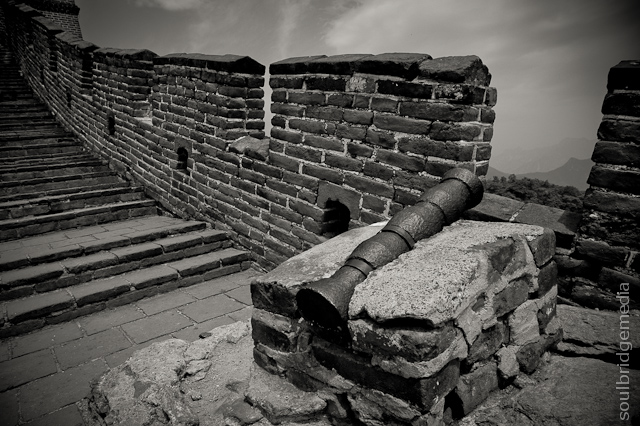
The wall quite literally goes on forever, its hard to fathom the sheer man power and materials required to be such an epic structure which you feel with every step. Step long enough and you’ll make it to tower 6 and salvation! Well maybe not but its your ticket out of there, not just in style but with speed (for the most part anyway) as this is the top of the toboggan ride!
This is similar to a lot of toboggan rides around the world, small single person sled with a manual stop/go lever down a metal chute. This was great fun but would have been even better if we could get more than a couple corners at a quicker pace. Sadly like a lot of these rides, there’s the token “Henny Penny” that will scream and clutch at the ground with their fingernails if they could, even if they’re travelling at a snails pace. The signs warning NOT to brake as it will cause accidents were useless and at least half the ride was more like returning traffic on the last day of a long weekend. For those thinking that you could some how get hurt if you go down at full speed, there are signs telling you when to brake and judging from the way the track is laid out, you would be hard pressed to hurt yourself, even if you were being stupid. Either way it made the return journey quick and reasonably effortless.
By now you’ve probably worked up an appetite and if you’ve timed it right, you’ll have just enough time to grab a bite before the return bus arrives. Food choice is limited to a small selected on local cuisine or Subway. Like a lot of western fast food places, Subway staff spoke a little English but mainly in the form of menu items, any deviation from this required the usual gesturing and improv’ charades.
The line for the bus grows quickly so its best to line up as soon as you can to get a seat, if not you will have to stand or sit on the floor, which is rather uncomfortable for the quite lengthy ride.
Next up we continue the China must see’s and track ourselves down some Pandas!
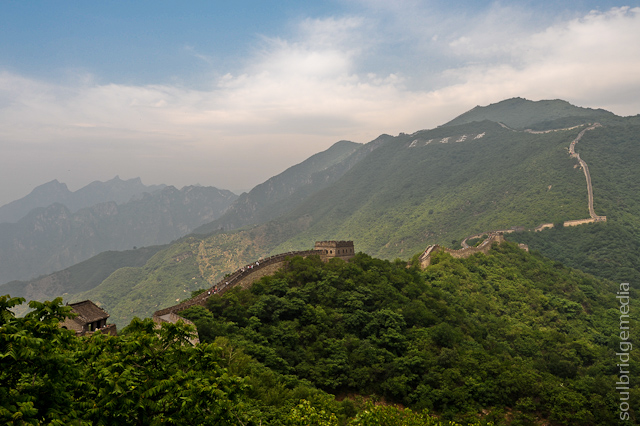
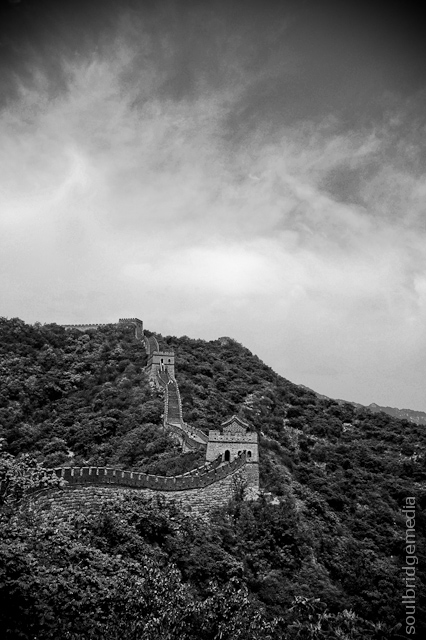
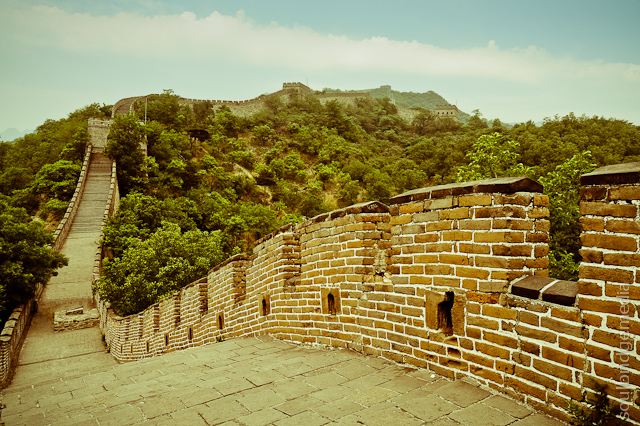
Beijing 2011 part #1 – Arrival + Temple of Heaven, Forbidden City
Beijing 2011 part #3 – Beijing Zoo
Beijing 2011 part #4 – Shopping
Beijing photo gallery here
Beijing Zoo photo gallery here
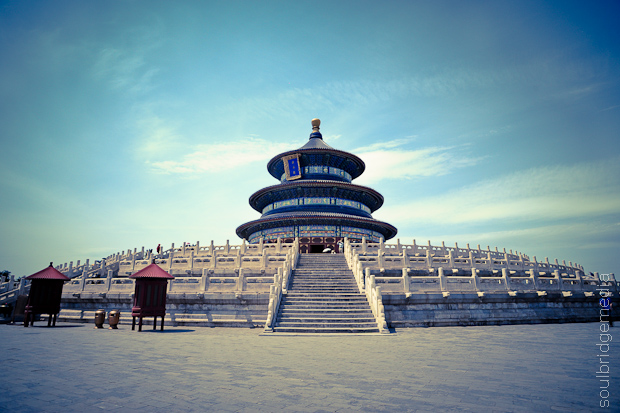
Temple of Heaven
What goes up, must come down, literally and figuratively. By now, we’d lost count of the number of flights we had caught and that first day in LA seemed like a lifetime ago. The concept of time and day had disappeared and jetlag had consumed us. I felt more like I should’ve be starting a Fightclub than hitting another country but sure enough we awoke after a restless flight in Beijing and zombied our way to the Airport express train.
Once you adjusted to the extra 10C degrees and double the humidity of Paris, the transfer is pretty straight forward to Dongzhimen station in downtown Beijing, Dong Cheng. I couldn’t believe our luck when we stumbled out of the station right into a waiting cab. But it wasn’t until we were at our hotel (after an unnecessarily long walk) that I had blindly handed over approx. $20-25AU to the cabbie instead of what should have been $5-10AU!
Travel tip: always be on your guard and suspect anyone and everyone are out to rip you off. Ok, its not that bad but keep your wits about you. (Honest) cabs are dirt cheap with a flagfall of only a few bucks for the first couple K’s then less than $1AU per km after that. All legit cabs have official markings and a sticker on the rear side window stating prices. If they try to pull a swift one on you just point to the sticker or ask for a receipt, if they try to haggle or give you excuses, just wave them off and move on. If they continue to hassle you, feel free to call them a “Zei” = thief and keep walking, they’ll get the point. This goes likewise for just about any store or market where haggling is used, if you don’t, you will be hit with the naïve tourist tax.
Temple of Heaven
The Temple of Heaven is more than just the temple (Hall of Prayer), its nearly 3 square km’s of parkland and a good 15min walk from the street, even longer if you’re caught out after dark as there are very few lights and the spaghetti of paths are poorly lit. The plus side to visiting at dusk is seeing a number of kite flyers along the Imperial Walkway. Kites are lit with flashing lights and as more slack on the string is given, the operator adds flashing lights along the string. Definitely quite the spectacle with the typically older male “pilots” loving all the attention from on lookers.
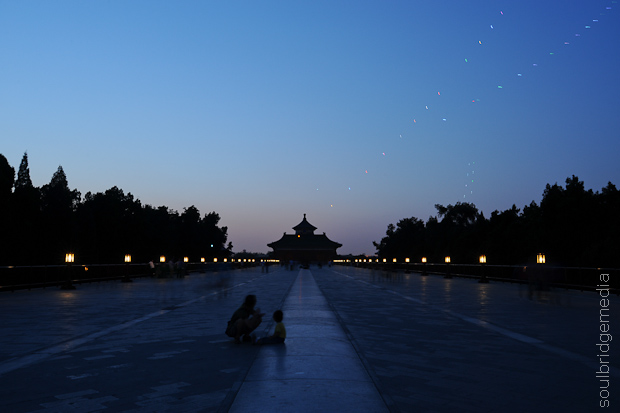
Temple of Heaven grounds at night
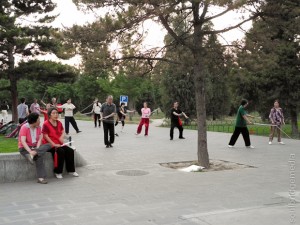
Sword training
There are also scores of classes at work for exercise, martial arts, tai chi, religious and even swing and latin dancing, all very interesting to watch.
For general viewing however as mentioned its very dimly lit for the most part and the temple area closes around 5pm, once night falls there’s very little to see so its best to go during the day.
Travel tip: check opening times as they vary through out the year. A fee is payable on entry to the park, you can also buy tickets to the temple and other buildings or buy them at the entrance to the respective areas.
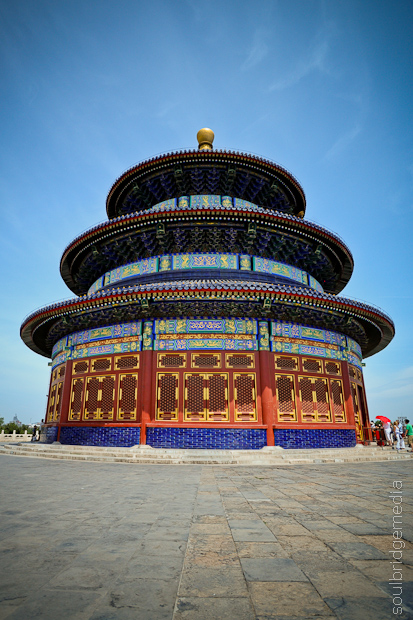
Temple of Heaven
Forbidden City and Tiananmen Square
Travel tip: If you’re coming from the Temple of Heaven on metro line 5, you can either take the interchange at Chongwenmen to the southern end of Tiananmen Square or if you’ve seen a square before and want to avoid the every present protestors, change at Dongdan and get off at either Tiananmen East or West stops which drop you between the Square and the southern entrance to the Forbidden City.

Tiananmen Square
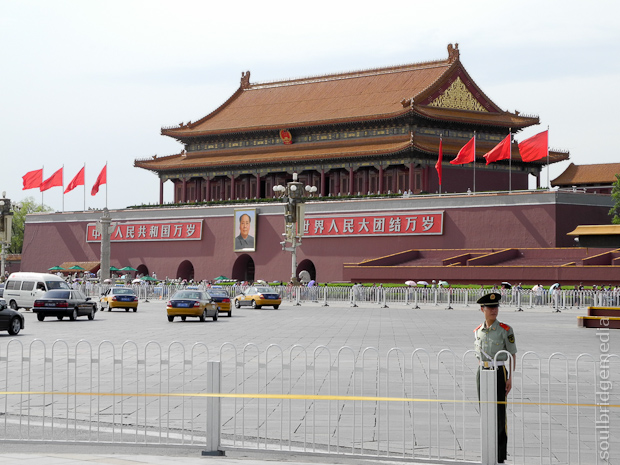
Forbidden City - Tiananmen Square entrance
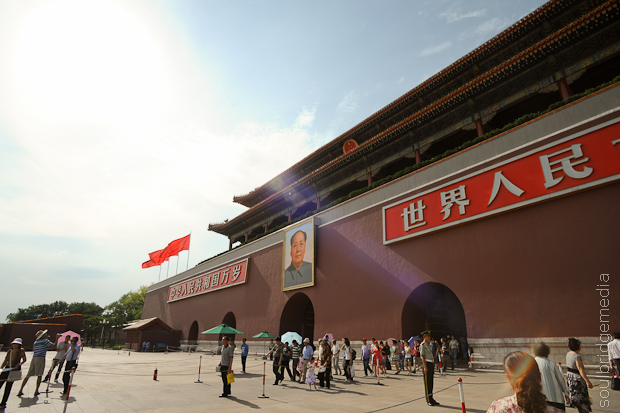
Forbidden City - Tiananmen Square entrance
Walking up to street level you begin to get a feel of just how colossal everything is. Looking back towards the Square and up at (what you may think is) the gates and battlements of the Forbidden city, people are dwarfed to the size of ants with the sheer numbers of visitors compounding the effect. Even the stairs up to the streets look like they were taken from your city’s favourite sporting venue.
Thanks to the ever present “threat” from protestors there is a strong military and police presence which can be a little intimidating to say the least. Walking through the gates leads to a huge courtyard area full of hawkers, beggars, people trying to sell you tours and souvenirs and general shifty types. If your water rations are running low you will be able to top up here but just be prepare to haggle for that too.
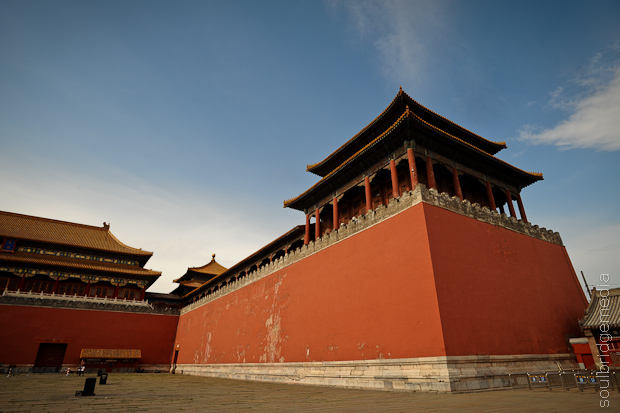
Forbidden City southern entrance
After close to half an hour of walking you will get to the actual gates to the Forbidden City and when they called it a city they’re not kidding! 999 buildings await you inside, so a fair portion of your day will be taken up exploring it. If that’s not your thing or you want to escape the barrage of people, exit out of the courtyard area either west or east and follow the moat around the surrounding wall either north or south to one of the corner towers for a great photo opportunity.
Photo tip: in the afternoon, photograph from the western side so they sun lights the wall and tower. On the off chance the smog isn’t so bad and there is some colouring in the sky, you may be lucky enough to get some colouring in the sky and get a nice silhouette shot from the eastern side.
With a little time to spare (and after having already walked to the northern gate) we decided to continue walking the back streets to our hotel. If you really want to get an idea of the city, this is the best way to see it. Basically Beijing is growing so fast that the new buildings and construction are popping up all around the once slum-ish areas without enough time for the original inhabitants to leave so you will notice after 3-4 blocks from common business/shopping/tourist areas the quality of buildings and living conditions dramatically decreases to the point of families bathing in the streets and selling fresh produce from the ground you’re walking on. Definitely a real eye opener.
After a couple miss turns and dead ends we were back to the familiar Hutongs around Luogu Alley and grateful for the bed we had to sleep on.
Next up, we take on the Great Wall!
Beijing 2011 part #2 – The Great Wall – Mutianyu
Beijing 2011 part #3 – Beijing Zoo
Beijing 2011 part #4 – Shopping

